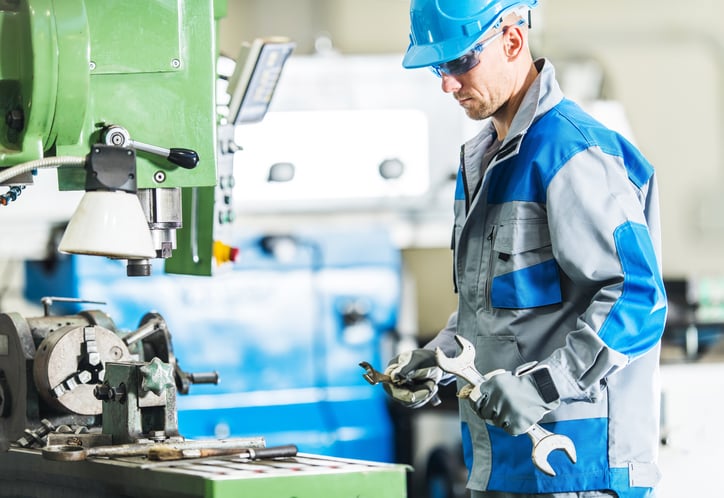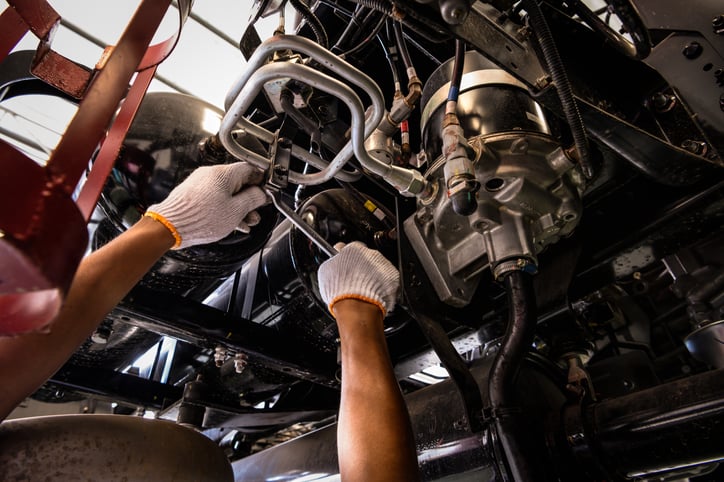Facilities managers are the ultimate mix of global and situational thinkers. You must be able to stay abreast of needs and challenges in your department as a whole, while still knowing about the ins and outs of individual assets and projects. With so many maintenance tasks that need to be completed at any given time, how do you determine what to tackle and when?
The trick is to identify the difference between reactive maintenance and preventive maintenance, as well as what assets benefit from each. The right maintenance software solution can make this task easier with tools that automate your workload on an ongoing basis.
Preventive maintenance software triggers actions based on estimates from historic knowledge, combined with the average lifecycle of an asset, to make an educated maintenance plan. With the Maintenance Request page, your staff can create work orders for reactive maintenance from a multitude of platforms following an asset breaking, needing to be replaced or otherwise falling out of commission.
See preventive maintenance software in action — book a demo with Maintenance Care today!
Let’s look at reactive and preventive maintenance in action. Meet Mike: Mike owns a transportation company that specializes in inventory sorting and segregation. He chooses to employ both reactive and preventive maintenance strategies to keep his facilities up and running.

Reactive Maintenance is for Low-Impact Assets and Equipment Failure
Mike’s reactive maintenance strategies live mostly in the office and administrative realms, such as replacing or restocking office supplies and equipment like lightbulbs, printers and printer ink.
Reactive maintenance works for equipment or assets that are:
-
Not necessarily critical to your day-to-day
-
Inexpensive to repair or replace
-
Easily fixed or replaced
-
Not costly to keep parts or backups of in stock

It’s easy to keep spare lightbulbs and printer ink on shelves because they're not expensive and they store well. If an office printer breaks down, it’s not going to completely halt Mike’s business to repair or replace it.
The pitfall of reactive maintenance can be pinpointed right within the word itself. This type of activity is reactionary, meaning issues concerning assets or equipment are addressed only when something breaks down or needs to be replaced.
This leads to difficulty scheduling asset downtime and maintaining appropriate inventory levels on parts. It also means a lack of consistency in planning for asset failure. These challenges don’t mean reactive maintenance is negative – you just want to reduce how often you rely on it.

Preventive Maintenance is for Critical Assets
Back to Mike’s business: He wants to employ preventive maintenance techniques for his high-impact assets, meaning anything that will hurt business if it creates downtime in production or incurs high costs to repair or replace. It’s important to make sure his pallet mover is available to go at all times and that all of his trucks are road-ready. Even assets like computers are important to maintain from a preventive perspective, rather than a reactive one.
If Mike depends on his devices for keeping his client’s inventory and cargo organized or tracking what shipments are coming and going, the last thing he wants is a computer that gets hit with a virus, becomes slow and sluggish or doesn’t have enough memory. Creating a cloud storage system helps with backing up important files that can be accessed from multiple devices. This type of preventive activity also makes replacing computers easier when they begin to decline after a few years.

In some businesses, employees are even a part of preventive maintenance scheduling and planning. Truck drivers, for example, are required to maintain specific certifications, licensing requirements and other compliance requirements, such as physical exams. It is imperative to make sure those requirements are scheduled and updated promptly so that you aren’t caught off guard if a driver can’t take a load because of a paperwork issue that could have been fixed with some foresight and planning.
Some assets benefit from a mix of strategies. Mike may use preventive maintenance on his trucks for oil changes, tire rotation and any type of compliance, while also using reactive maintenance for on-demand or less critical functions, such as cosmetic flaws or windshield washer fluid.

How to Stay on Top of Reactive vs. Preventive Maintenance
Balancing reactive and preventive maintenance is where a strong asset management and maintenance software solution changes the game. A CMMS will track asset lifecycles, flag potential maintenance needs or issues and communicate them to your team. This creates a blueprint for planning your maintenance.
Planning your workload to improve building efficiencies automatically through effective scheduling helps your team to stay productive, increase maintenance completion speed and decrease unproductive time. While you probably won’t fully halt reactive maintenance, employing strategic systems like preventive maintenance programs will cut back on your need for conditional response maintenance.

As preventive maintenance and asset management software begins to smooth out the rough edges in your maintenance processes, you will start to notice as your work environment and overall facility health improve. No longer are team members stressed because of yet another unplanned interruption that they need to investigate, troubleshoot and correct.
With a little planning, there are fewer unpleasant surprises and greater peace of mind in knowing what to expect in maintaining your assets. The cost-benefit analysis also helps you save money from fewer expensive emergency parts orders and repairs. Preventive maintenance stops the hemorrhaging of lost profits due to unexpected downtime.
Maintenance Care offers cohesive and complementary solutions for asset management and preventive maintenance planning through simply powerful digital maintenance solutions. Schedule a demo today and see how your maintenance strategies can grow with a little planning.








